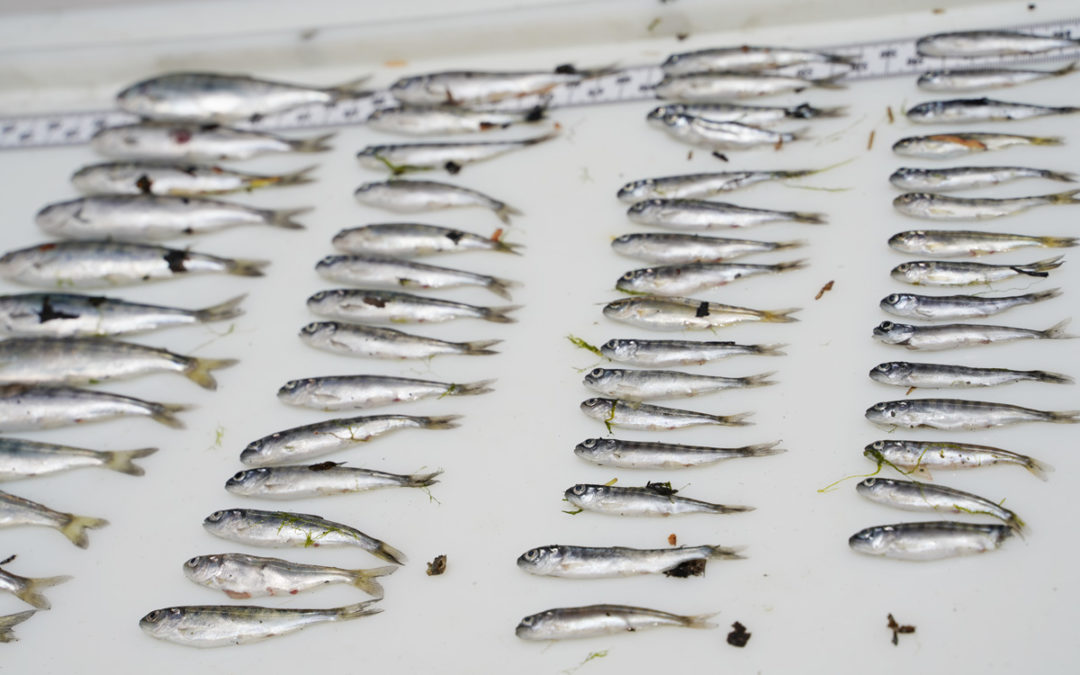
Ongoing fish kill on the Klamath River is an ‘absolute worst-case scenario’
SOURCE: High Country News
DATE: May 27, 2021
SNIP: The video shows clear river water washing over rocks as sunlight dances in the shallows. Small slivers of white that look like leaves float on the surface. But they aren’t leaves; they’re the bodies of juvenile salmon, most of them no longer than a finger, dead from a warm-water disease exacerbated by drought on the Klamath River. The caption to the video, filmed by Yurok Vice Chairman Frankie Joe Myers, is stark: “This is what climate change looks like when we don’t act.”
Fish have been dying on the Klamath since around May 4, according to the Yurok Tribal Fisheries Department. At that time, 97% of the juvenile salmon caught by the department’s in-river trapping device were infected with the disease C. shasta, and were either dead, or would die within days. Over a two-week period, 70% of the juvenile salmon caught in the trap were dead.
This spring, the Klamath Basin is already in extreme and exceptional drought — one of the worst drought years in four decades. Irrigators upriver from the fish kill were told in mid-May that for the first time since “A” Canal in the Klamath Project began operating in 1907, they would not receive any water from it. The irrigators say they need 400,000 acre-feet of water but this year, they will receive just 33,000 acre-feet from the Klamath Project — a historic low. The situation has put pressure on an embattled region already caught in a cyclical mode of crisis due to a drying climate. “For salmon people, a juvenile fish kill is an absolute worst-case scenario,” Myers said in a statement.
In a statement about this year’s drought, Klamath Irrigation District President Ty Kliewer said, “This just couldn’t be worse. The impacts to our family farms and these rural communities will be off the scale.”
Last summer was also dry, and farmers and their supporters held a tractor convoy to protest the lack of water and the Bureau of Reclamation’s allocation decisions. Meanwhile, the Yurok Tribe’s Boat Dance ceremony was cancelled because of low flows last August, and after a dry winter, heated litigation around water allocation persists. This week, several irrigators set up an encampment by the Klamath Project head gates, which have been forced open by irrigators during past droughts. “This drought is not a fluke event,” Yurok citizen and tribal counsel Amy Cordalis testified in a House hearing on the ongoing drought in the West this week. “It is part of a larger pattern of drought brought on by climate change. Climate change is no longer some vague future threat — we are seeing its effects happening now, in real time.”
Wet years used to be the norm, and dry years were uncommon, but in recent years that’s changed, especially since 2014, said Barry McCovey Jr., Yurok Fisheries Department director and Yurok citizen, who has studied fish disease on the Klamath for 20 years. This year’s drought is part of the new climate regime the basin is shifting into.
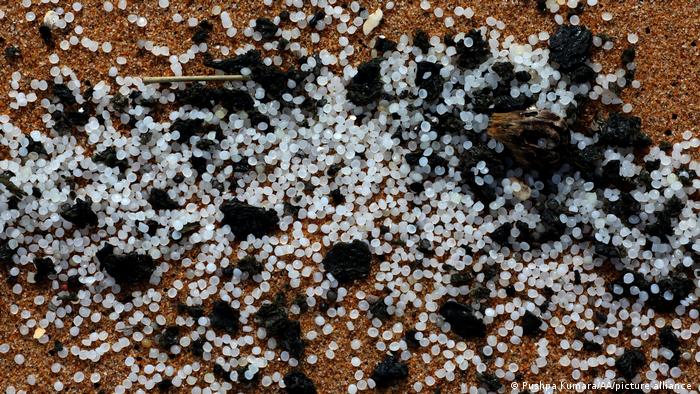
Sri Lanka faces ‘worst-ever beach pollution’ from burning ship
SOURCE: DW
DATE: May 29, 2021
SNIP: Sri Lanka is facing probably “the worst beach pollution in our history,” as a burning container ship continues to spill plastic debris into the sea off the capital, Colombo, a senior environmental official warned Saturday.
Dharshani Lahandapura, head of the country’s Marine Environment and Protection Authority (MEPA), said the microplastic pollution could cause years of ecological damage to the Indian Ocean island.
She made the comments as tons of hazardous waste continued to wash up on the shore from the Singapore-registered MV X-Press Pearl, which caught fire 10 days ago while waiting to enter Colombo harbor.
How much plastic and waste has spilled so far?
More than 30 containers, most of them containing chemicals, have already fallen overboard into the sea, and the contents have been washed ashore, spanning over 20 nautical miles (37 kilometers).
Thousands of navy personnel, using mechanical diggers, have already scooped tonnes of tiny plastic waste off the beaches.
Authorities are concerned that millions more of the pellets will wash ashore and threaten fish-breeding shallow waters.
The affected seafront is known for its crabs and jumbo prawns as well as its tourist beaches.
Fishermen have been banned from an 80-kilometer (50-mile) stretch of coast around the vessel.
The Central Environmental Authority (CEA) said the affected region should be declared “hazardous areas” and the public should be ordered to stay away.
The impact on mangroves, lagoons and marine wildlife in the region was being assessed by environmental experts.
The X-Press Pearl caught fire as it waited to enter Colombo harbor and remains anchored just outside the port. The 25-member crew was evacuated.
The vessel was en route from the Indian port of Hazira to Singapore, with 1,486 containers, most of them carrying chemicals.
Oil spill fears mount
Though the fire was brought under control on Friday, firefighters are now focusing on keeping the engine room cool to prevent an oil spill, Lahandapura said earlier.
Much of the ship’s cargo, including 25 tons of nitric acid, sodium hydroxide, lubricants and other chemicals, appeared to have been destroyed in the fire, officials said.
Authorities believe the fire was caused by a nitric acid leak that the crew had been aware of since May 11.
MEPA has lodged a complaint with police against the captain of the ship, claiming that authorities were not informed of the blaze in time.
This is the second major environmental disaster to hit Sri Lanka in less than a year.
A crew member of the New Diamond was killed when the oil tanker caught fire last September.
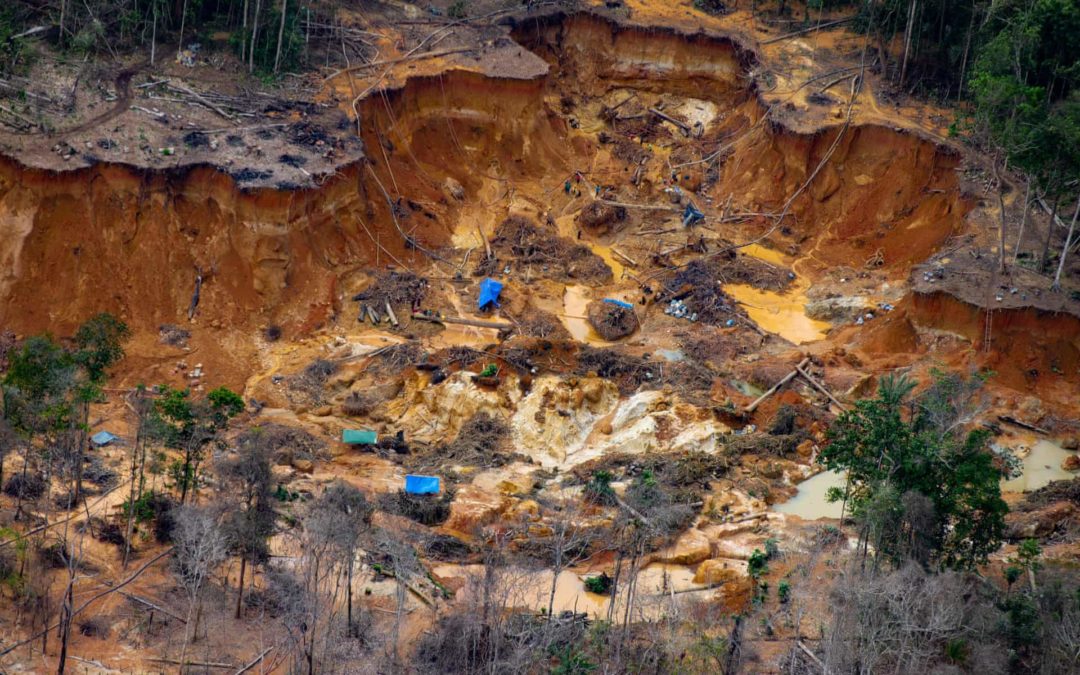
Brazil aerial photos show miners’ devastation of indigenous people’s land
SOURCE: The Guardian
DATE: May 27, 2021
SNIP: Rare and disturbing aerial photographs have laid bare the devastation being inflicted on Brazil’s largest reserve for indigenous people by thousands of wildcat goldminers whose illegal activities have accelerated under the country’s far-right leader, Jair Bolsonaro.
Activists believe as many as 20,000 garimpeiro prospectors are operating within the Yanomami reserve in northern Brazil using speedboats and light aircraft to penetrate the vast expanse of jungle near the border with Venezuela.
Bolsonaro, who has repeatedly bemoaned the size of the Yanomami territory and been accused of emboldening environmental criminals with his pro-development rhetoric, was due to make a provocative trip to a village in the reserve’s south-western tip on Thursday – his first to an indigenous community since becoming president in January 2019. Yanomami leaders denounced the visit as an unwanted attempt to promote illegal mining in their ancestral land.
The images, captured during flyovers early last month, leave no doubt about the intruders’ impact on the 9.6m-hectare (24m-acre) Amazon enclave – nor the impunity with which they are allowed to act in a supposedly protected reserve.
Several photographs show areas where the miners, whose trade Bolsonaro has vowed to legalise, have obliterated the dense, pine-green forest and replaced it with immense bronze-coloured gashes littered with felled trees and pools of stagnant water. Others depict bustling riverside encampments where the garimpeiros live and work, featuring bars, restaurants, shops, houses and even a snooker table. In some pictures it is possible to make out single-engine planes and helicopters – used to smuggle workers, supplies and equipment into the reserve – positioned beside clandestine airstrips near the Venezuelan border.
Along the Uraricoera river, a region the Guardian visited last year, the monitoring team spotted enormous manmade craters reminiscent of the Serra Pelada goldmine made notorious in the 1980s by the images of Brazil’s most celebrated photographer, Sebastião Salgado.
“What shocked me was the enormity of it,” said Christian Braga, the Amazon-based photographer who took the recent images from a Greenpeace turboprop plane.
“We knew these mines existed. The whole of Brazil knows there are goldmines on Yanomami land. But we didn’t understand the true scale of it and how economically valuable these mines are. These mines are prosperous. These mines are worth millions … It is truly frightening. They are just huge.”
Braga said the miners he saw at work in the Yanomami reserve, which is the same size as Portugal, bore no relation to those who once used steel pans to hunt for gold in remote Amazon rivers.
“That’s history; nowadays the mines are insane. These guys are organised. They’ve got planes. They got antennas. They’ve got satellite TV, motorbikes, quad bikes, planes, helicopters, air conditioning, generators. These guys have built a town,” the photographer said.
“When I looked down [at their camps] I just thought: we’ve lost control of goldmining … just look at the point this has reached. More than 20,000 garimpeiros. What are we going to do now?”
In a recent interview the anthropologist Ana Maria Machado, who works with the Yanomami, called the region “a pressure cooker about to explode”.
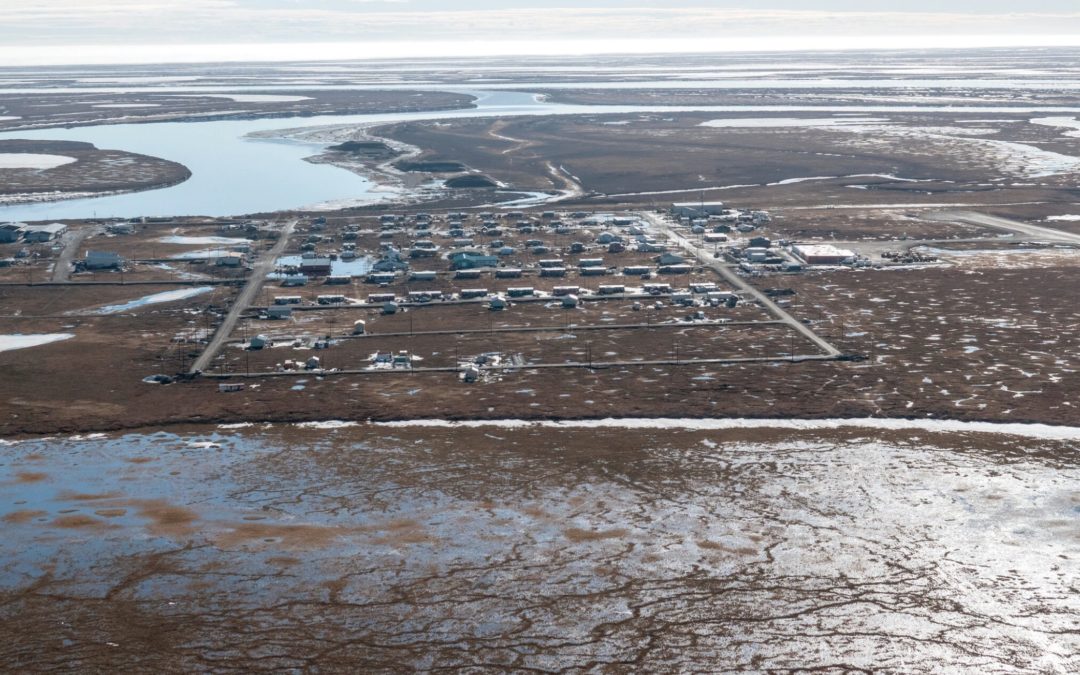
Biden Administration Defends Huge Alaska Oil Drilling Project
SOURCE: New York Times
DATE: May 26, 2021
SNIP: The Biden administration is defending a huge Trump-era oil and gas project in the North Slope of Alaska designed to produce more than 100,000 barrels of oil a day for the next 30 years, despite President Biden’s pledge to pivot the country away from fossil fuels.
The multibillion-dollar plan from ConocoPhillips to drill in part of the National Petroleum Reserve was approved by the Trump administration late last year. Environmental groups sued, arguing that the federal government failed to take into account the impact that drilling would have on fragile wildlife and that burning the oil would have on global warming.
The project, known as Willow, set up a choice for the Biden administration: decline to defend oil drilling and hinder a lucrative project that conflicts with its climate policy or support a federal decision backed by the state of Alaska, some tribal nations, unions and key officials, including Lisa Murkowski, a moderate Republican senator seen as a potential ally of the administration in an evenly split Senate.
On Wednesday, the administration filed a brief in U.S. District Court for Alaska, defending the Trump administration decision to greenlight the Willow project.
In a statement, the Interior Department said that the Trump administration decision complied with the environmental rules in place at the time and that the plaintiffs did not challenge the approval “within the time limitations associated with environmental review projects” for the National Petroleum Reserve.
The administration declined to explain how its position on the Willow project aligns with its climate change policies. But in its court filing, the government said the Trump administration adequately considered Willow’s impacts on fish, caribou and polar bear habitat. It also upheld the method used by the prior administration to account for the greenhouse gas emissions generated by the project.
In a paradox worthy of Kafka, ConocoPhillips plans to install “chillers” into the permafrost — which is fast melting because of climate change — to keep it solid enough to support the equipment to drill for oil, the burning of which will continue to worsen ice melt.
Over the past 60 years, Alaska has warmed more than twice as fast as the rest of the United States. Arctic ecosystems are in disarray, sea ice is disappearing, sea levels are rising and the ground is thawing.
Kristen Miller, acting director of the Alaska Wilderness League, said the burning of oil produced by the Willow project over its lifetime would create nearly 260 million metric tons of carbon dioxide emissions — about the equivalent of what is produced by 66 coal-fired power plants. But, she argued, the infrastructure also will lead to new oil and gas projects in the region.
“Not only does the project in itself have significant and long-lasting climate problems, it’s setting the stage for more emissions in the future,” Ms. Miller said.
Rosemary Ahtuangaruak, an environmental activist and a resident of the nearby village Nuiqsut, said she believed the project would divert the normal migration of caribou, hurting the community’s ability to feed families.
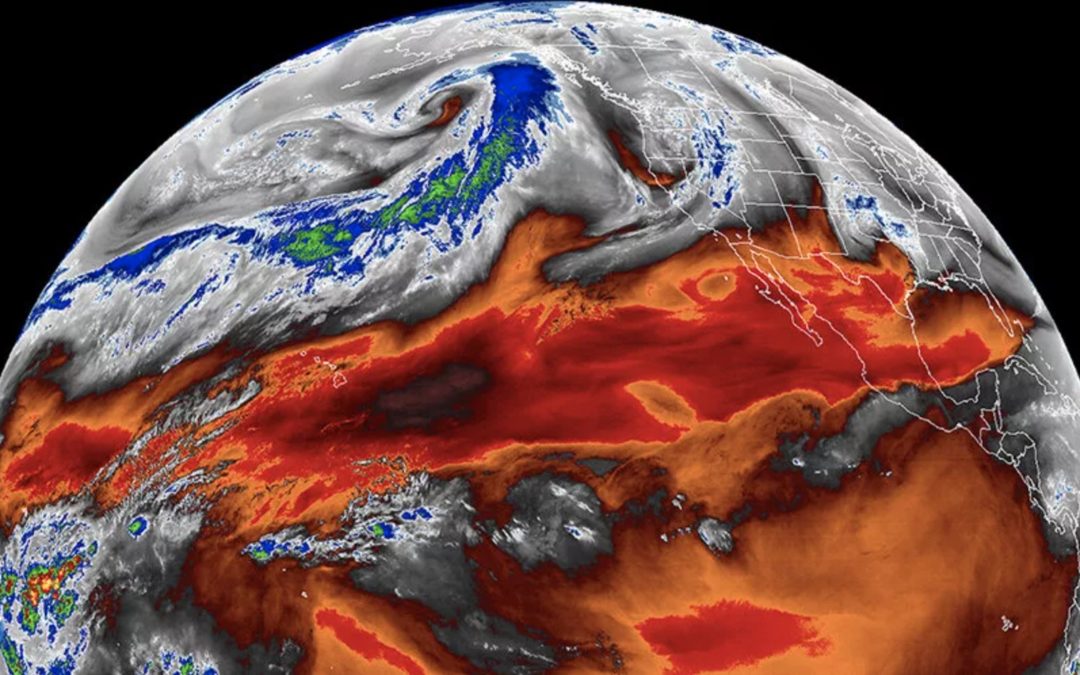
Satellites may have been underestimating the planet’s warming for decades
SOURCE: Live Science
DATE: May 26, 2021
SNIP: The global warming that has already taken place may be even worse than we thought. That’s the takeaway from a new study that finds satellite measurements have likely been underestimating the warming of the lower levels of the atmosphere over the last 40 years.
Basic physics equations govern the relationship between temperature and moisture in the air, but many measurements of temperature and moisture used in climate models diverge from this relationship, the new study finds.
That means either satellite measurements of the troposphere have underestimated its temperature or overestimated its moisture, study leader Ben Santer, a climate scientist at Lawrence Livermore National Laboratory (LLNL) in California, said in a statement.
“It is currently difficult to determine which interpretation is more credible,” Santer said. “But our analysis reveals that several observational datasets — particularly those with the smallest values of ocean surface warming and tropospheric warming — appear to be at odds with other, independently measured complementary variables.” Complementary variables are those with a physical relationship to each other.
In other words, the measurements that show the least warming might also be the least reliable.
Santer and his team compared four different ratios of climate properties: The ratio of tropical sea surface temperature to tropical water vapor, the ratio of lower troposphere temperature to tropical water vapor, the ratio of mid- to upper-troposphere temperature to tropical water vapor, and the ratio of mid- to upper-troposphere temperature to tropical sea surface temperature.
In models, these ratios are strictly defined based on physical laws governing moisture and heat. It takes more energy to warm up moist air than dry air, because water sucks up heat efficiently. Warmer air can also hold more moisture than cooler air, a phenomenon that is visible in morning dew — as the air cools overnight, it sheds water.
The researchers found, though, that the satellite observations didn’t stick to these supposedly well-defined rules. Instead, they fell within a wide range, depending on which dataset the researchers used. This might mean that some datasets — the ones that better mesh with the physical rules governing moisture and heat — are more accurate than others, the researchers reported May 20 in the Journal of Climate.
The datasets that best followed the rules for water vapor and temperature ratios tended to be those showing the most warming of the sea surface and troposphere, the researchers found. Likewise, the ones that best followed the rules for mid- to upper-troposphere temperatures and sea surface temperature ratios were those with higher measurements of sea surface temperature.
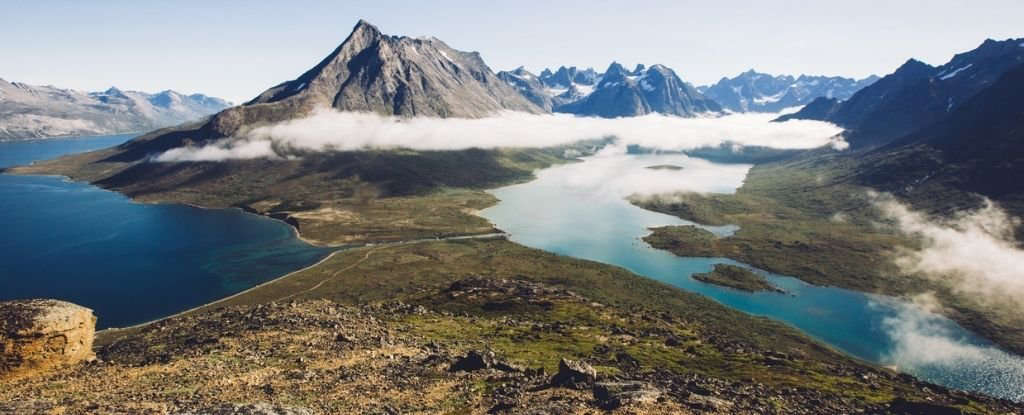
Greenland’s Melting Glaciers Are Polluting Coasts With Shocking Amounts of Mercury
SOURCE: MSN
DATE: May 25, 2021
SNIP: Greenland’s melting ice sheet is unleashing an astonishing amount of mercury into the nation’s rivers and fjords.
Downstream of three glaciers in the southwest, researchers have found coastal ecosystems are swimming in high concentrations of the heavy metal, which can build up in the food web to toxic levels.
The quantity of mercury observed in three glacial rivers and three fjords in Greenland was among the worst in recorded history. In fact, researchers say the concentrations here are only matched by the polluted waterways of Industrial China, which overall produces about one-third of the world’s mercury pollution.
As Greenland’s glaciers continue to melt in line with our worst-case scenarios, experts are worried even more trapped mercury (Hg) could one day be released into the environment.
“This large, unaccounted for and climatically sensitive Hg source has not been considered in current global Hg budgets and Hg management strategies, but it should be assessed urgently given the human and economic implications of elevated Hg exposure,” the authors of the new study warn.
Mercury is a natural and widespread element, released by wildfires, volcanic eruptions, and erosion. Yet in the past 150 years, industrial activity has been actively pumping even more of this pollutant into the atmosphere.
As the metal gradually drifts down from above, the element is passed from one organism to another, gradually concentrating in the food chain. People and animals in the Arctic are more likely to ingest toxic levels of mercury from their food and water, possibly because global circulation carries these heavy metals to the north.
In addition, increasing amounts of mercury also fall onto glaciers, snow, and ice, which can then run off into local waterways or rise into the atmosphere.
Previous studies have shown moderate mercury concentrations in run-off from melting glaciers, but the concentrations found in Greenland are two orders of magnitude higher than what scientists have found in other Arctic rivers.
“We didn’t expect there would be anywhere near that amount of mercury in the glacial water there,” says climate scientist Rob Spencer from Florida State University (FSU).
Greenland may very well be a neglected hotspot of natural mercury emissions, which have been trapped in ice for millennia. Even if we curb industrial mercury emissions tomorrow, the rapid melting of all this ice could sabotage human efforts to reduce pollution from this heavy metal to safe levels.
Already, experts think Greenland’s ice sheet has reached a tipping point, with much of its ice doomed to melt. As glaciers disappear, revealing the bedrock underneath, preliminary research indicates atmospheric mercury could also increase.
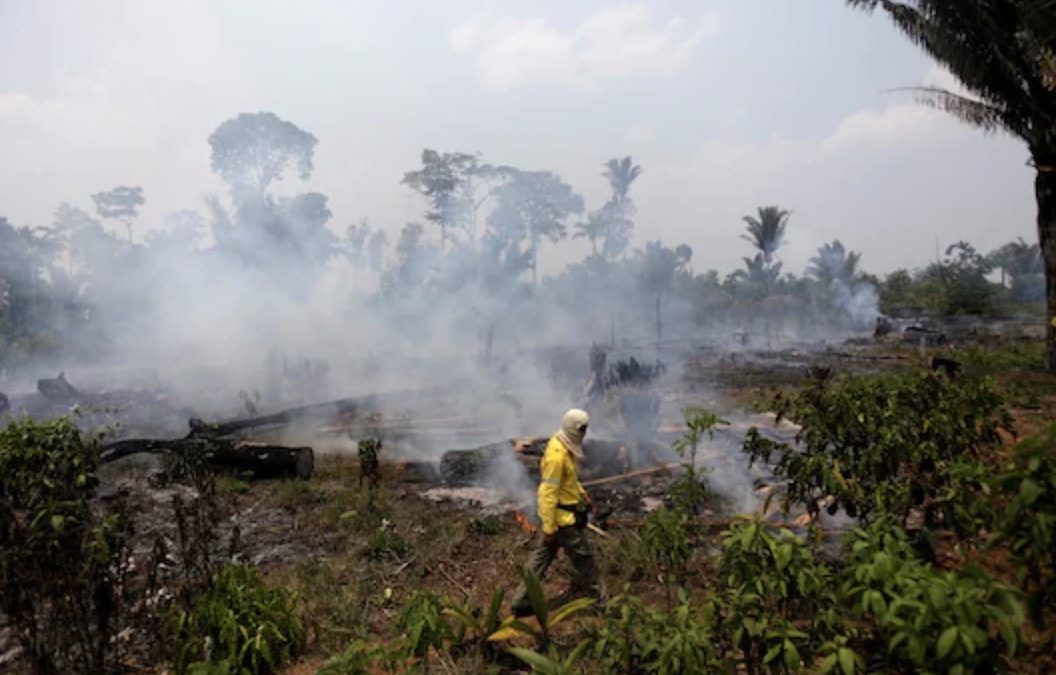
Humans Wiping Out Biodiversity Faster Than Asteroid Explosion That Caused Extinction: Study
SOURCE: News18 India and Nature
DATE: May 24, 2021
SNIP: About 66 million years ago, an asteroid collided with the Earth causing an explosion equivalent to millions of nuclear weapons detonating simultaneously. The collision wiped out three-fourths of all plant and animal species on Earth. Today, humans are wiping out freshwater gastropods, a group of species of snails and slugs that thrive in freshwater, at a faster rate than the sudden mass extinction event caused by the asteroid, as per a new study.
“66 million years ago, you had an asteroid impact that had an immediate effect on the whole world,” said Thomas A Neubauer, an ecologist at Justus Liebig University in Germany and one of the authors of the study, in his statement to Vice. “Right now we have a comparable situation: it’s similarly catastrophic, and the catastrophe is us, humankind,” Neubauer added.
The research, published in Nature Communications on May 21, 2021, also highlights that previous studies underestimated how the asteroid-caused mass extinction affected the freshwater ecosystems. According to the new study, the extinction phase started by the astronomical event lasted more than 5 million years. Our biodiversity, which was severely damaged because of the loss of more than 92% of all species of the freshwater ecosystems, took about 7 million years to recover.
The study warns that unless significant efforts are made to conserve freshwater ecosystems, the ongoing extinction crisis will have a severe impact on freshwater animal and plant life for millions of years, causing extreme damage to the overall biodiversity of the world.
According to Nebauer, even if humans’ impact on the planet’s biodiversity ends today, the extinction rate will stay high for a really long period of time. The recovery from the damage caused by humans will take much longer. The ongoing mass extinction caused by humans in the history of evolution is also known as the 6th mass extinction or Anthropocene extinction.
“Despite our short existence on Earth, we have assured that the effects of our actions will outlast us by millions of years,” Nebauer said in a news release by Naturalis Biodiversity Center.
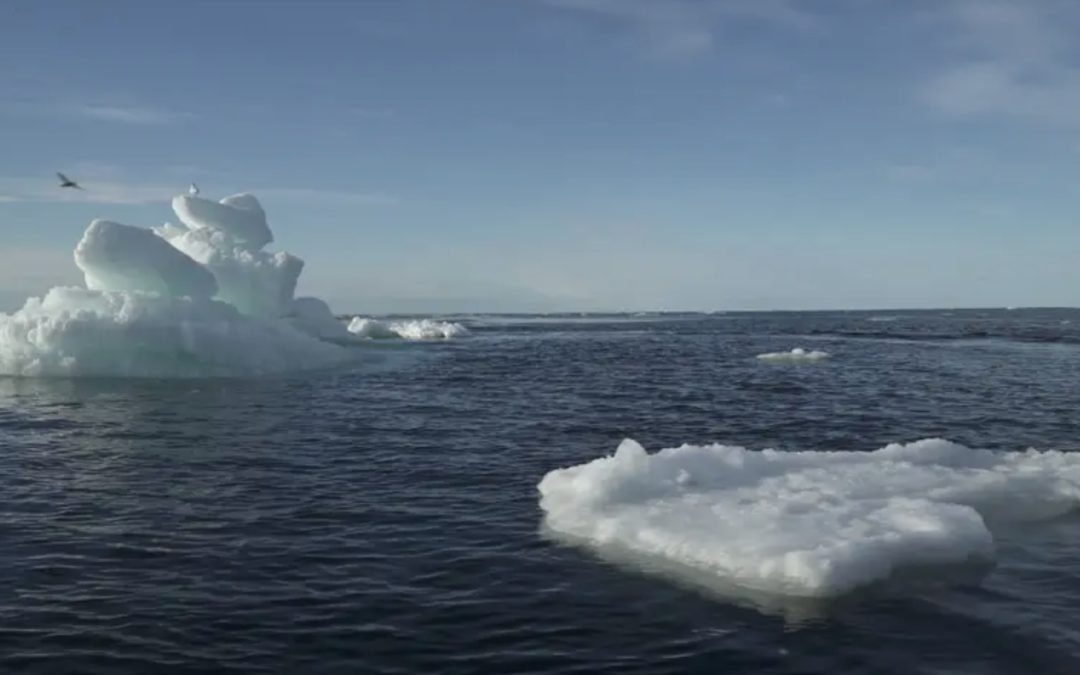
‘Mindboggling’ Arctic heatwave breaks records
SOURCE: The Independent
DATE: May 24, 2021
SNIP: A “mind-boggling” heat wave in the Arctic has broken temperature records in north-west Russia, meteorologists have said.
Last Wednesday, the mercury rose above 30C in parts of the Arctic, significantly above the average for the time of year.
Scott Duncan, a meteorologist based in the UK, described conditions as “truly exceptional for any time of the year but mind-boggling for May”.
The climate expert added that because the Arctic is warming so fast, “profound heatwaves” are more likely to occur in the future.
Increasing temperatures are causing ice and permafrost to melt in the region, resulting in previously trapped methane being released into the atmosphere and contributing to global heating.
The current heatwave looks set to continue, with climate scientist Zack Labe saying that over the coming week temperatures will be more than 10C above average in eastern Siberia.
Although still shocking, the temperatures seen this month are well below the hottest ever day in the Arctic, which was the 38C recorded in the Siberian town of Verkhoyansk last year.
At the time, the CBS News meteorologist Jeff Berardelli described the record as “the kind of weather we expect by 2100, 80 years early”.
“For perspective Miami has only reached 100 degrees [37.7C] once on record,” he added.
The latest temperature record comes shortly after a new study said the region has warmed three times faster than the rest of the Earth over the past half century.
Published by the Arctic Monitoring and Assessment Programme (AMAP), the report warned that temperature changes in the Arctic could have far-reaching consequences across the world, including on issues such as rising sea levels.
Its findings were discussed last week by the Arctic Council, a group of countries which includes the US and Russia.
The council’s 12th ministerial meeting took place in Reykjavik, Iceland, on Thursday, with discussion centring on its four major issues: climate change, human health, Arctic shipping and innovation in local communities.
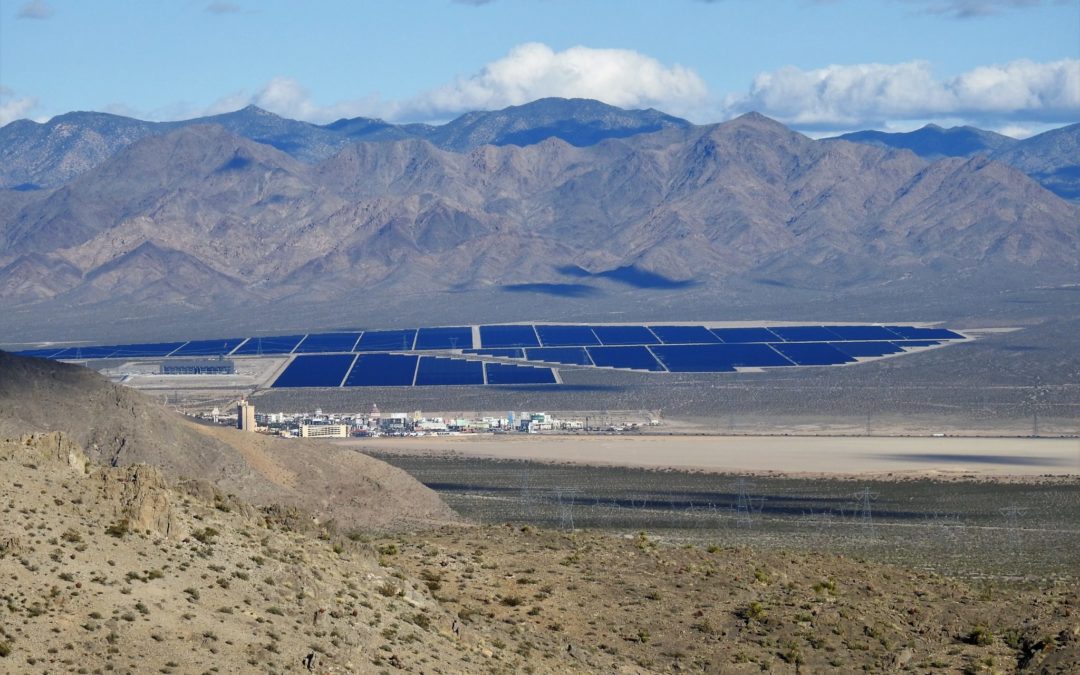
The tortoise vs. the bulldozer
SOURCE: Reno News and Review
DATE: May 22, 2021
SNIP: The Gemini Project, an 11-square-mile solar energy array to be constructed on federal land near the Valley of Fire State Park in Southern Nevada, has received preliminary approval from regulators. The photovoltaic panels, arranged like a vast lake of mirrors in the desert, are to be built on land occupied by the tortoises and other rare and protected species.
Plans call for some of the desert tortoises to be removed from the site prior to construction; hundreds of others, including eggs, hatchlings and juveniles, will be crushed when the desert vegetation is scraped off or mowed down.
Gemini, and other projects like it, is representative of the collision of renewable energy technology with environmental and social concerns. The expansion of biofuels may take land away from essential food production; the extraction and processing of lithium may result in more pollution, and lithium batteries can’t be economically recycled. Geothermal plants and wind farms also have adverse environmental consequences.
The Mohave is home to the desert tortoise, listed as “threatened” under the Endangered Species Act. The adult reptiles may weigh up to 15 pounds and have a lifespan of 80 years. Biologists note that the animal is an indicator species, whose well-being is a measure of the overall viability of the Mojave ecosystem.
The land earmarked for the Gemini project is part of a migration area for the reptiles. Hundreds of them winter in burrows at the site. Biologists note that migration is essential for the species to prevent inbreeding, which can lead to species decline.
Emmerich, of Basin and Range Watch, said the Gemini site is near other solar project areas, transmission lines and highways that together will be a barrier to tortoise migration. He said clearing the land for the project will doom a significant number of the reptiles and disrupt the habitats of other plant and animal species.
Other plant and animal species also will be impacted by the project, he said, including birds who will mistake the glittering solar farm for a lake and collide with the panels. The tortoises, though, are the major concern, because the species has been spiraling toward extinction.
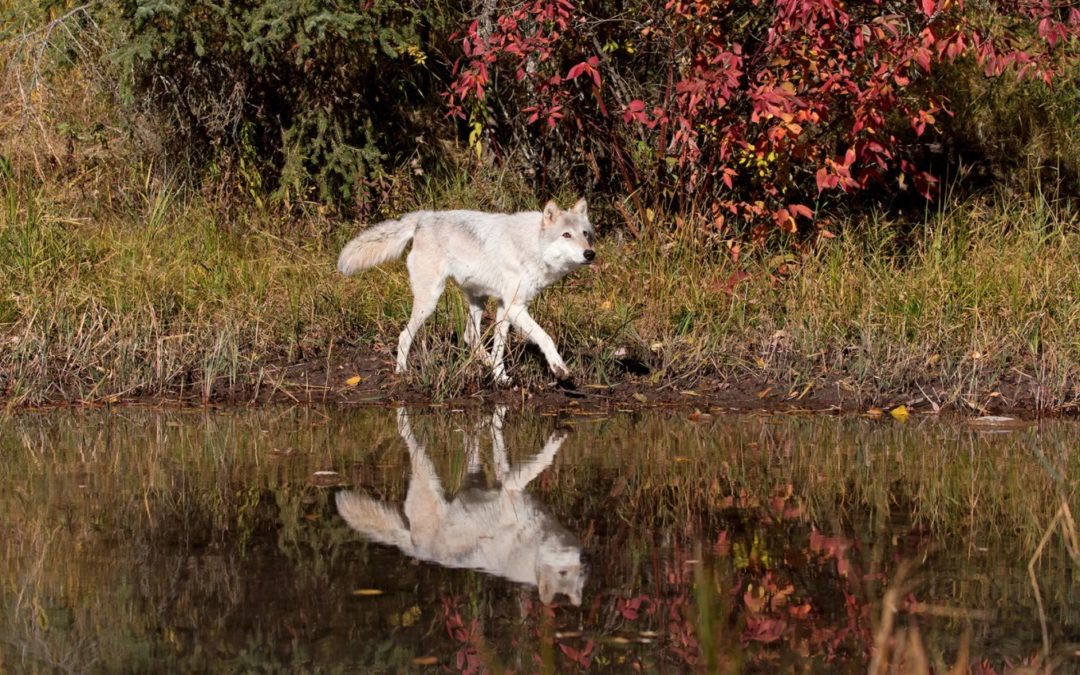
New Idaho Law Calls For Killing 90% Of The State’s Wolves
SOURCE: NPR
DATE: May 21, 2021
SNIP: Conservative lawmakers in Idaho and Montana have passed new laws to drastically reduce the number of wolves in those states. Concerns over the animal’s impact on both livestock and wild prey have long festered among ranchers and some hunters and reached the floor of Idaho’s House of Representatives in April.
Twenty-five years ago, federal wildlife officials reintroduced wolves to Idaho. Recovery went well enough that in 2011 the animal came off the endangered species list. Since then, hunters have legally killed hundreds every year.
Idaho’s new law calls for killing up to 90% of them. Hunting wolves after hours with night vision goggles is now legal, as is using of motorized vehicles like snowmobiles or ATVs to chase them.
It’s unclear how many hunters will respond to Idaho lawmakers’ call to kill more than 1,300 wolves. The legislation also liberalized trapping rules and increased funding to hire professional exterminators, a process that can include shooting them from helicopters. Legislators moved that money from the Fish and Game budget.
Across the border in Montana there are similar new laws, although state game managers will have more say in how they’re implemented, and Montana hasn’t set an absolute number of wolves to be killed. The new laws will please ranchers in both states, many of whom have long opposed wolf reintroduction.
